what municipal agency was the first to establish a criminal identification bureau?
Fingerprints provide a reliable means of personal identification. That is the essential explanation for why fingerprints accept replaced other methods of identifying people who are reluctant to admit previous arrests using different names. The scientific discipline of fingerprint identification stands out amongst all other forensic sciences for many reasons, including the following:
Why Fingerprint Identification?
● Has served governments worldwide for over a century past providing accurate identification of persons. No 2 fingerprints have ever been found alike in many billions of homo and automated calculator comparisons. Fingerprints are the foundation for criminal history confirmation at police agencies worldwide. ● Established the kickoff professional certification plan for forensic scientists, the IAI'south ● For more than than a century, has remained the about unremarkably used forensic evidence worldwide. In most jurisdictions, fingerprint examination cases match or outnumber all other forensic examination casework combined. Fingerprints harvested from crime "scenes lead to more suspects and generate more bear witness in court than all other forensic laboratory technique combined."
● Established the first forensic professional organisation, the International Association for Identification (IAI), in 1915.
In earlier civilizations, branding or maiming (cutting off easily or noses) were used to mark persons as criminals. The thief was deprived of the hand which committed the thievery. Ancient Romans employed the tattoo needle to identify and prevent desertion of mercenary soldiers. Before the mid-1800s, police force enforcement officers with extraordinary visual memories, then-chosen "camera eyes," identified previously arrested offenders by sight solitary. Photography lessened the burden on retention, but it was not the answer to the criminal identification trouble because personal appearances modify. Around 1880, French anthropologist Alphonse Bertillon devised a system to measure and record the dimensions of certain bony parts of the body. These measurements were reduced to a formula that, in theory, would just utilise to one person and would not alter over the course of his or her adult life. Bertillon also pioneered the concept of arrest photos (mugshots) taken simultaneously with bodily measurements and fingerprints. The Bertillon System was generally accepted in many countries during the next three decades, however the anthropometric measurement system never recovered from the events of 1903, when a man named Will West was sentenced to the
Other visible human characteristics, such as facial features, alter considerably with age merely fingerprints are relatively persistent. Barring injuries or surgery causing deep scarring, or diseases such as leprosy damaging the formative layers of friction ridge skin, finger and palm impress features have never been shown to move most or change their unit relationship throughout the life of a person (and injuries, scarring, and diseases tend to exhibit telltale indicators of unnatural alter).
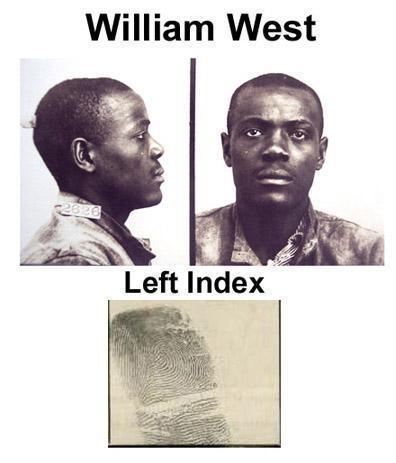

Upon investigation, it was adamant there were ii men who looked very similar. Their names were William and Will Westward. Their Bertillon measurements were similar plenty to place them as the aforementioned person. Even so, fingerprint comparisons quickly and correctly determined the biometrics (fingerprints and face) were from two different people. (According to prison records made public years after, the West men were apparently identical twins and each had a record of correspondence with the same immediate family relatives.)
Ancient artifacts with carvings similar to friction ridge skin have been discovered in many places throughout the world. Prehistoric motion-picture show writing of a paw with ridge patterns was discovered on a cliff in Nova Scotia. In ancient Babylon, fingerprints were used on clay tablets for business organization transactions. BC 200s - China Chinese records from the Qin Dynasty (221-206 BC) include details nearly using handprints every bit evidence during break-in investigations. Dirt seals bearing friction ridge impressions were used during both the Qin and Han Dynasties (221 BC - 220 Advertisement). Advertising 1400s - Persia The 14th century Persian book "Jaamehol-Tawarikh" (Universal History), attributed to Khajeh Rashiduddin Fazlollah Hamadani (1247-1318), includes comments almost the practice of identifying persons from their fingerprints. 1600s 1684 - Grew 1685 - Bidloo 1686 - Malpighi No mention of friction ridge peel uniqueness or permanence was made by Grew, Bidloo or Malpighi. 1700s 1788 - Mayer - Starting time Mention of Uniqueness
Prehistoric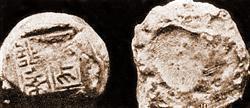
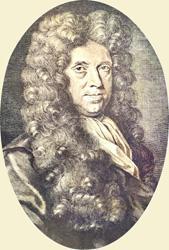
In the "Philosophical Transactions of the Regal Society of London" paper in 1684, Dr. Nehemiah Grew was the get-go European to publish friction ridge skin observations. 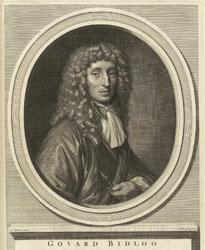
Dutch anatomist Govard Bidloo's 1685 volume, " Beefcake of the Human Body " included descriptions of friction ridge peel (papillary ridge) details. 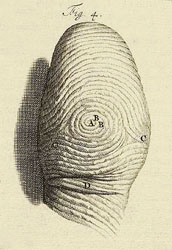
Table four from " Anatomy of the Human Body ."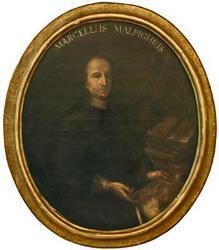
In 1686 Marcello Malpighi, an anatomy professor at the University of Bologna noted that fingerprint ridges, spirals and loops in his treatise. A layer of pare was named later on him, the "Malpighi" layer, which is approximately ane.8 mm thick.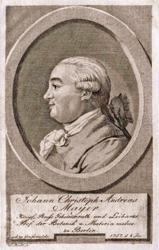
German anatomist Johann Christoph Andreas Mayer authored the book "Anatomical Copper-plates with Appropriate Explanations" containing drawings of friction ridge peel patterns (the original title in High german was "Anatomische Kupfertafeln nebst dazu gehörigen Erklärungen"). Mayer wrote, "Although the arrangement of skin ridges is never duplicated in two persons, nevertheless the similarities are closer amidst some individuals. In others the differences are marked, yet in spite of their peculiarities of organization all have a certain likeness" (Cummins and Midlo, 1943, pages 12-13). Mayer was the offset to declare friction ridge skin is unique.
1823 - Purkinje 1856 - Welcker 1858 - Herschel The English began using fingerprints in July 1858 when Sir William James Herschel, Chief Magistrate of the Hooghly District in Jungipoor, India, get-go used fingerprints on native contracts. On a whim, and without thought toward personal identification, Herschel had Rajyadhar Konai, a local businessman, impress his paw print on a contract. Jungipoor is now know every bit The purpose of the hand print was to "... to affright [him] out of all idea of repudiating his signature." The native was suitably impressed and Herschel made a habit of requiring palm prints--and later, just the prints of the right Index and center fingers--on every contract fabricated with the locals. Personal contact with the document, they believed, made the contract more bounden than if they simply signed it. Thus, the offset broad-calibration, mod-day utilise of fingerprints was predicated not upon scientific prove, but upon superstitious beliefs. Still, as Herschel'south fingerprint collection grew, he began to realize the inked impressions could prove or disprove identity. While his experience with fingerprinting was absolutely limited, Sir William Herschel's private conviction that all fingerprints were unique to the individual, besides as permanent throughout that individual'southward life, inspired him to expand their use. 1863 - Coulier 1877 - Taylor American microscopist Thomas Taylor proposed that finger and palm prints left on any object might exist used to solve crimes. The July 1877 issue of The American Journal of Microscopy and Popular Science included the following clarification of a lecture past Taylor: 1870s-1880 - Faulds In 1880, Faulds forwarded an explanation of his nomenclature arrangement and a sample of the forms he had designed for recording inked impressions, to Sir Charles Darwin. Darwin, in avant-garde historic period and ill wellness, informed Dr. Faulds he could be of no aid to him, but promised to laissez passer the materials on to his cousin, Francis Galton. Also in 1880, Faulds published an article in the Scientific Journal, "Nature" (nature). He discussed fingerprints as a means of personal identification, and the use of printer'due south ink as a method for recording such fingerprints. He is also credited with the first latent print identification - a greasy fingerprint deposited on an alcohol bottle. 1882 - Thompson 1882 - Bertillon Alphonse Bertillon, a clerk in the Prefecture of Police of at Paris, French republic, devised a system of classification, known as anthropometry or the Bertillon Arrangement, using measurements of parts of the body. Bertillon's arrangement included measurements such as head length, head width, length of the centre finger, length of the left human foot; and length of the forearm from the elbow to the tip of the middle finger. Bertillon also established a system of photographing faces - which became known as mugshots. In 1888 Bertillon was made Chief of the newly created Department of Judicial Identity where he used anthropometry equally the primary means of identification. He afterward introduced Fingerprints, just relegated them to a secondary office in the category of special marks. 1883 - Mark Twain (Samuel L. Clemens) 1888 - Galton 1891 - Vucetich 1892 - Alvarez 1892 - Galton Galton'south interest in fingerprints included assistance for his research into While Galton before long discovered fingerprints were of no help to his genetic research (fingerprints offered no business firm clues to an individual'due south intelligence or genetic history), he was able to scientifically prove what Herschel and Faulds already believed: Co-ordinate to Galton's calculations, the odds of ii private fingerprints existence the same were 1 in 64 billion. He named the characteristics by which fingerprints can be identified. Almost Galton Item terms describing friction ridge skin and impression features have been abased in modern forensic scientific discipline terminology. 1896 - Hodgson 1897 - The first National Bureau of Identification in the U.s.a. 1897 - India'south Fingerprint Pioneers On 12 June 1897, the Council of the Governor General of India approved a commission written report that fingerprints should be used for the classification of criminal records. The Anthropometric Bureau in Kolkata (now Calcutta) became the earth's first Fingerprint Bureau later that year. Qazi Azizul Haque and Hem Chandra Bose worked in the Calcutta Anthropometric Agency (earlier it became the Fingerprint Bureau). Haque and Bose are the two Indian fingerprint experts credited with master evolution of the Henry System of fingerprint classification (named for their supervisor, Edward Richard Henry). The Henry classification organisation is still used in many countries (primarily equally the manual filing system for accessing paper fingerprint card annal files which have not been scanned and computerized).
1800s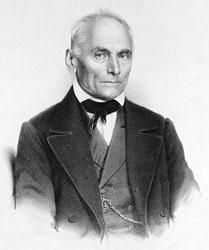
In 1823, Jan Evangelista Purkinje, anatomy professor at the University of Breslau in Wrocław, Poland, published his thesis discussing nine fingerprint patterns. Purkinje fabricated no mention of the value of fingerprints for personal identification. Purkinje is referred to in near English language publications as John Evangelist Purkinje.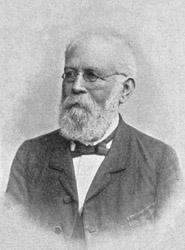
German anthropologist Hermann Welcker of the University of Halle, studied friction ridge peel permanence past printing his own right manus in 1856 and once more in 1897, then published a written report in 1898.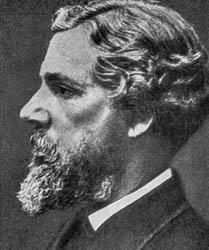
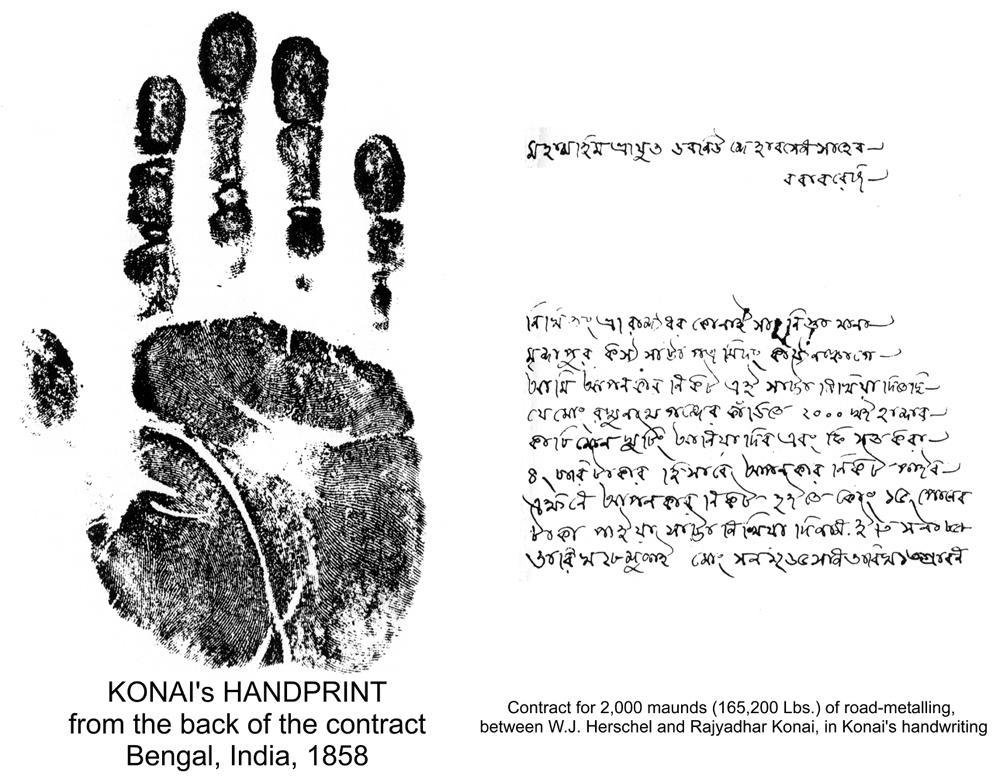

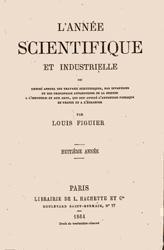
Professor Paul-Jean Coulier, of Val-de-Grâce in Paris, published his observations that (latent) fingerprints can be developed on newspaper by iodine fuming, explaining how to preserve (gear up) such developed impressions and mentioning the potential for identifying suspects' fingerprints by utilize of a magnifying glass. 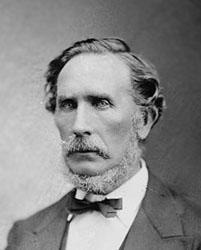
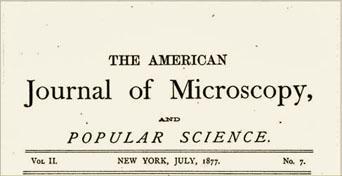
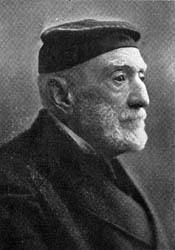
During the 1870s, Dr. Henry Faulds, the British Surgeon-Superintendent of Tsukiji Infirmary in Tokyo, Japan, took up the report of "skin-furrows" afterward noticing finger marks on specimens of "prehistoric" pottery. A learned and industrious man, Faulds not only recognized the importance of fingerprints every bit a means of identification, merely devised a method of nomenclature every bit well. Dr. Faulds' clinic in Tokyo eventually became St. Luke'south International Infirmary .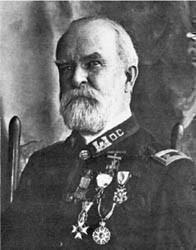
In 1882, Gilbert Thompson of the U.Southward. Geological Survey in New Mexico, used his own thumb print on a document to help forestall forgery. This is the first known employ of fingerprints in the United States. Click the prototype beneath to come across a larger image of an 1882 receipt issued by Gilbert Thompson to "Lying Bob" in the corporeality of 75 dollars. 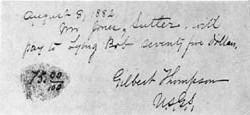
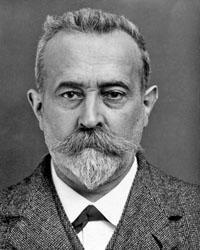
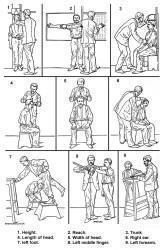
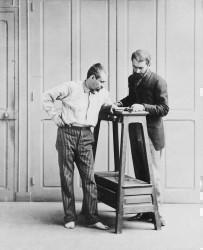
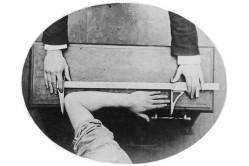
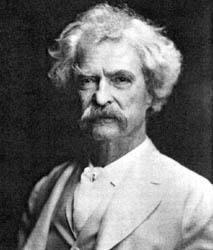
A murderer was identified using fingerprint identification in Marking Twain'due south book " Life on the Mississippi ." A dramatic courtroom trial, including fingerprint identification, was depicted in a later book, " The Tragedy of Pudd'north Head Wilson ." This volume was adjusted into a movie in 1916, and a made-for-TV movie in 1984. 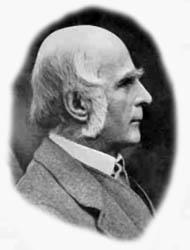
Sir Francis Galton, British anthropologist and a cousin of Charles Darwin, began his observations of fingerprints equally a means of identification in the 1880's. 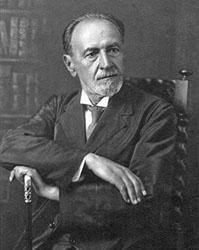
Juan Vucetich, an Argentine Police force Official, began the get-go fingerprint files based on Galton pattern types. At first, Vucetich included the Bertillon System with the files. 
Right Thumb Impression and Signature of Juan Vucetich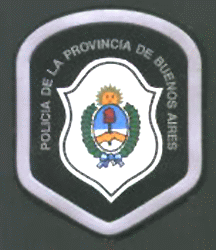
At Buenos Aires, Argentina in 1892, Inspector Eduardo Alvarez made the first criminal fingerprint identification. He was able to identify Francisca Rojas, a adult female who murdered her two sons and cutting her ain pharynx in an attempt to place blame on another. Her bloody print was left on a door post, proving her presence at the scene of the murder. Alvarez was trained by Juan Vucetich. 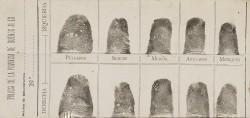
Francisca Rojas' Inked Fingerprints
Sir Francis Galton published his book, " Finger Prints " in 1892, establishing the individuality and permanence of fingerprints. The volume included the first published classification arrangement for fingerprints. In 1893, Galton published the book "Decipherment of Blurred Finger Prints," and in 1895 published the book "Fingerprint Directories."
(2) No two fingerprints are exactly the aforementioned . 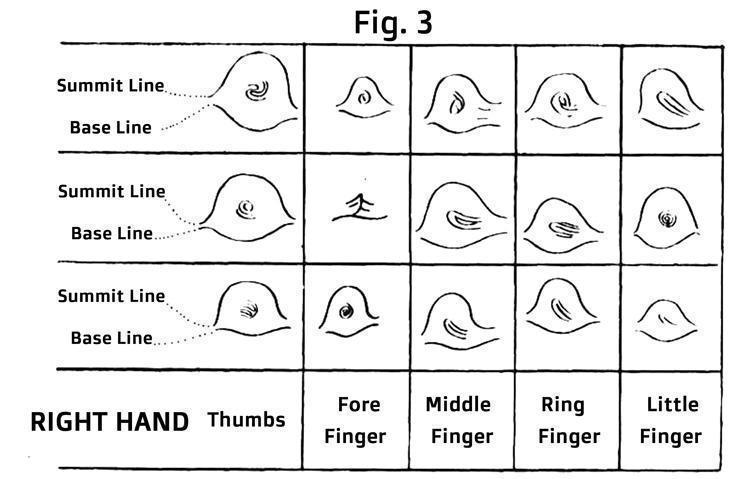
On eight May 1896, Dr. Ralph Hodgson gave a lecture on the value of fingerprint identification at the Sydney School of Arts in Sydney, Australia. The lecture included discussion of the peachy value of fingerprints and also the limited adoption of fingerprint records for identification by worldwide agencies already using Bertillon measurements. A diagram used in the lecture is shown to a higher place.
On October 20, 1897, the National Clan of Chiefs of Police of the Usa and Canada opened the National Bureau of Identification (NBI) in City Hall at Chicago, Illinois. NBI files included mugshots, fingerprints and related Bertillon records from criminals. In 1902, the parent system's name was inverse to the International Clan of Chiefs of Law and the NBI moved from Chicago to Washington, DC.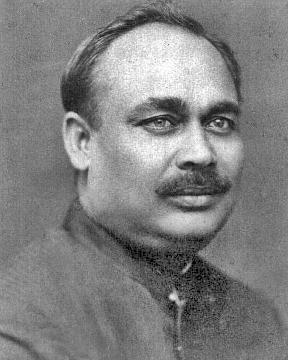
Qazi Azizul Haque 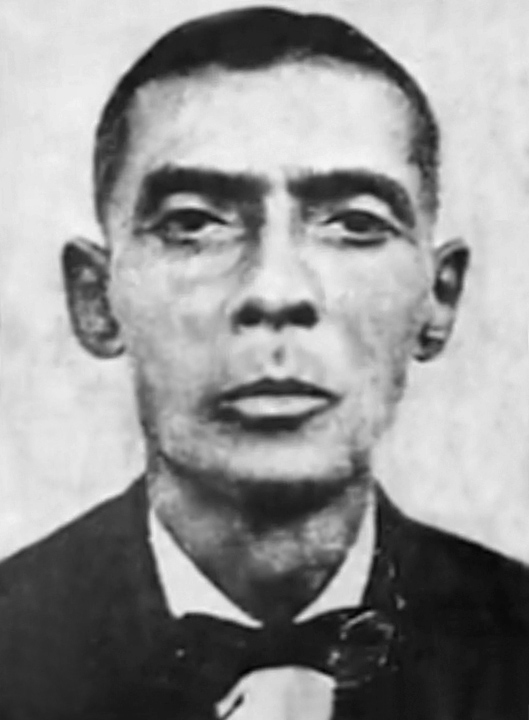
Hem Chandra Bose
1900 - E.R. Henry 1901 - New Scotland 1000 1902 - de Forest Starts America's Showtime Ceremonious Fingerprint Process Although rebuffed past Scotland Yard at outset, with US Embassy assistance Dr. de Wood was accepted as a fingerprint student under Sergeant (afterward Chief Inspector) Charles Due south. Collins at Scotland One thousand. Dr. de Wood returned to America with a fingerprint magnifier, several record forms, and a copy of Sir Edward R. Henry'southward publication " On 19 December 1902, James Johnson was the starting time person in America fingerprinted for civil bidder purposes. Johnson was fingerprinted as part of New York City's Civil Service awarding procedure. 1903 The fingerprints of Will and William West were compared at Leavenworth Penitentiary after both men were found to have very similar Anthropometric (Bertillon System) measurements. 1904 1905 U.S. Section of Justice forms the Agency of Criminal Identification in Washington, DC to provide a centralized reference collection of fingerprint cards. 1907 In 1907, the U.Due south. Department of Justice'southward (DOJ) Bureau of Criminal Identification moves from Washington, DC to Leavenworth Federal Penitentiary in Kansas where it is staffed at least partially by inmates. Suspicious of inmates interest with the identification process, the International Association of Chiefs of Law BCI (all the same located in Washington, DC), refused to share with the DOJ BCI in Kansas. The lack of communication betwixt local, land, and federal constabulary enforcement presented bang-up challenges at all levels in locating and identifying wanted criminals, specially those moving from country to land. The disconnect was non remedied until 1924. 1908 1910 - Brayley 1914 - Edmond Locard 1. If more than than 12 concurring points are present and the fingerprint is sharp, the certainty of identity is beyond contend. two. If eight to 12 concurring points are involved, then the case is borderline and the certainty of identity will depend on: 2.a. the sharpness of the fingerprints; two.b. the rarity of its blazon; two.c. the presence of the center of the effigy [core] and the triangle [delta] in the exploitable role of the print; 2.d. the presence of pores [poroscopy was previously spelled porescopy in some fingerprint publications]; 2.e. the perfect and obvious identity regarding the width of the papillary ridges and valleys, the direction of the lines, and the athwart value of the bifurcations [ridgeology / edgeoscopy]. Dr. Locard besides realized the value and the importance of, and rendered qualified conclusions to the identification process. iii.If a limited number of characteristic points are present, the fingerprints cannot provide certainty for an identification, but only a presumption proportional to the number of points bachelor and their clarity. 1914 The idea of Electronic Encoding of Fingerprints - Denmark Police In 1914, Hakon Jrgensen with the Copenhagen, Denmark Police lectured nearly the distant (remote) identification of fingerprints at the International Police Conference in Monaco. The procedure involved encoding fingerprint features for transmission to distant offices facilitating identification through electronic communications. In 1916, the book "Distant Identification" is published and used in Danish police training. The NIST (NBS) 1969 technical note reviewing Jrgensen's arrangement is 1915 Inspector Harry H. Caldwell of the Oakland, California Police Department's Bureau of Identification wrote numerous messages to "Criminal Identification Operators" in August 1915, requesting them to encounter in Oakland for the purpose of forming an organisation to further the aims of the identification profession. In October 1915, a group of twenty-two identification personnel met and initiated the "International Association for Criminal Identification" In 1918, the organization was renamed to the 1923 - U.s.a. Section of Justice Fingerprint Repository Returns to Washington, DC Following a meeting between the US Attorney General and representatives of the International Association of Chiefs of Police (IACP), the United states Section of Justice Agency of Criminal Identification fingerprint collection was transferred from Leavenworth Penitentiary dorsum to Washington, DC, in October 1923. 1924 - FBI's Identification Partition is formed In 1924, an act of congress established the Identification Division of the FBI. The International Clan of Chiefs of Constabulary (IACP) Bureau of Criminal Identification fingerprint repository and the Us Justice Section'southward Agency of Criminal Identification (BCI) fingerprint repository were combined with fingerprint cards from Leavenworth Federal Penitentiary to class the nucleus of the FBI Identification Partition fingerprint files with a starting full of 810,188 fingerprint cards. In 1924, the FBI'southward Identification Division had less than one,000 routine contributors and received an average of 300 fingerprint cards daily (FBI Law Enforcement Message, February 1933). 1933 - Betwixt 1924 and early 1933, the number of police force enforcement agencies routinely submitting fingerprint records to the FBI had increased more than v-fold to 5,282 routine contributors... and the average number of daily fingerprint cards received increased more 6-fold to ii,000 cards daily (FBI Law Enforcement Message, Feb 1933). 1938 - The FBI's Identification Division files included more than nine,500,000 fingerprint cards equally of the end of 1938 (FBI Police Enforcement Bulletin, Dec 1938, p. eighteen). 1940s By the end of World War 2, most American fingerprint experts agreed in that location was no scientific basis for a minimum number of respective minutiae to determine an "identification" and the twelve-bespeak rule was dropped from the FBI publication, "The Science of Fingerprints." By 1946, the FBI had candy over 100 million fingerprint cards in files maintained manually. In 1947, the FBI's fingerprint repository was moved from the Washington DC Armory Building to a new building at 2nd and D Streets Southwest in Washington, DC. With the introduction of automated fingerprint identification system (AFIS) engineering, the files were after carve up into computerized criminal files and manually maintained civil files. Many of the manual files were duplicates though, the records actually represented somewhere in the neighborhood of 25 to 30 one thousand thousand criminals, and an unknown number (tens of millions) of individuals represented in the ceremonious files. 1960s In 1963, the FBI's Latent Print Unit completed nine,668 latent print cases from local, country and federal American law enforcement, including 76,309 specimens (evidence items) for latent print examination. The Latent Print Unit of measurement identified suspects in 795 of the cases. As of 1 May 1964, the FBI's Identification Sectionalisation had more than 170 meg fingerprint records (170,681,473 records), including virtually 45 million criminal fingerprint records (44,926,750 criminal fingerprint records). 1970s 1971 The thousands of Tenprint Examiners working in the FBI's Identification Sectionalisation in the 1970s had to pull groups of fingerprints cards from file cabinets (sometimes only a few cards and sometimes hundreds) to manually compare the one-by-one against a newly received arrest, applicant, or other type of inked fingerprint carte du jour. Here are front and back images of a placeholder card which was used by one of those Tenprint Examiners in 1972. Frequently, examiners would detect that a group of fingerprint cards they needed to search would accept another examiner'southward placeholder carte inserted among them. That large plastic placeholder card was the signal to permit them know they would have to expect for the missing cards to be returned to the file drawer before the new search (one-by-one comparisons) could begin. The imperfect (oftentimes very deteriorating) condition of the skin on the deceased person's fingers meant that DEAD Desk fingerprint records were especially difficult to analyze/classify, and compare. Additionally, Expressionless Desk-bound fingerprints had to exist compared against both criminal and ceremonious files, with the civil files having much less specific nomenclature segments, often requiring tens times as many comparisons in the civil files versus the same fingerprint classification range in the criminal files. 1973 1974 - The Fingerprint Society 1977 On 1 August 1977 at New Orleans, Louisiana, members attention the 62nd Annual Conference of the International Association for Identification (IAI) voted to found the earth's offset certification program for fingerprint experts. Since so, the IAI's Contrary to assertions by some forensic science critics that fingerprint experts claim they never make erroneous identifications, the Latent Print Certification program, active since 1977, has specifically recognized such mistakes sometimes occur and must exist addressed. During the past four decades, CLPE condition has go a prerequisite for journeyman fingerprint expert positions in some US state and federal government forensic laboratories. IAI CLPE status is considered by many identification professionals to be a measurement of excellence. CLPE's have sometimes made erroneous latent print identifications (including an erroneous identification made by the chair of the IAI'southward Latent Print Certification Board). 1995 In 1995, the FBI established the Technical Working Grouping for Friction Ridge Analysis, Report, and Applied science (TWGFAST) to help establish national standards, guidelines, and best practices for friction ridge examination in forensic science laboratories and law enforcement latent print offices. TWGFAST was modeled after the FBI-sponsored Technical Working Group on DNA Assay Methods (TWGDAM) established in 1989. In 1999, TWGFAST became
1900s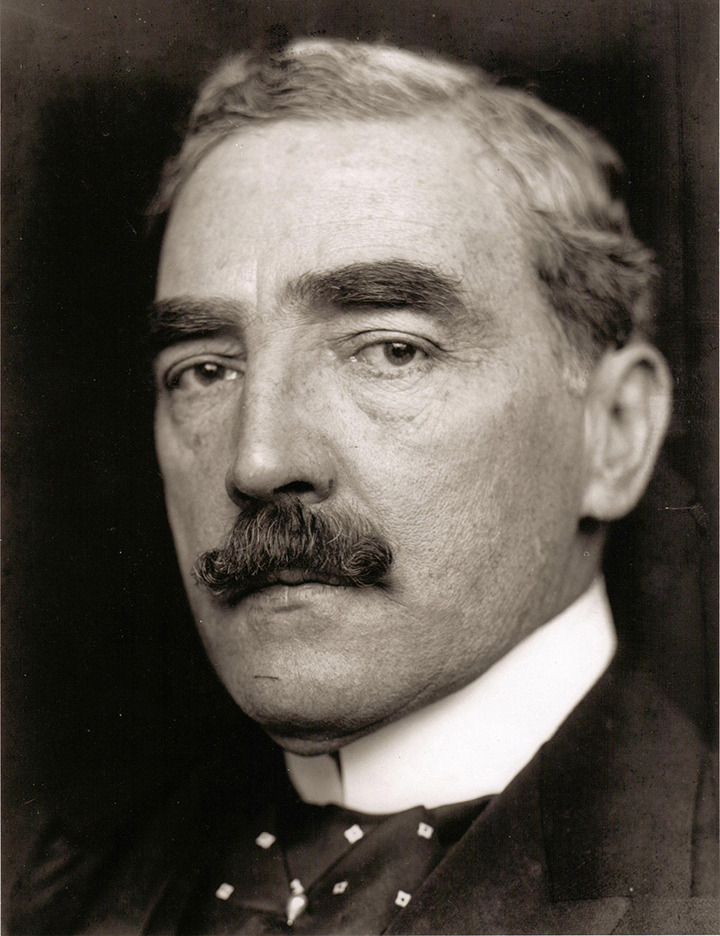
The U.k. Home Secretary Office conducted an research into "Identification of Criminals by Measurement and Fingerprints." Mr. Edward Richard Henry (afterward Sir ER Henry) appeared before the inquiry committee to explain the system published in his contempo book "The Classification and Apply of Fingerprints." The committee recommended adoption of fingerprinting as a replacement for the relatively inaccurate Bertillon system of anthropometric measurement, which only partially relied on fingerprints for identification. 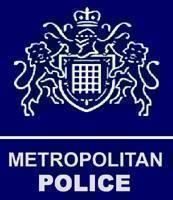
The Fingerprint Branch at New Scotland M ( Metropolitan Police ) was created in July 1901. It used the Henry Arrangement of Fingerprint Classification. 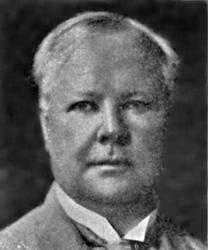
Dr. Henry Pelouze de Wood was appointed Chief Medical Examiner of the New York City Civil Service commission in June of 1902 and was tasked with developing a civil applicant identification procedure to reduce fraud involving imposters testing for applicants. Dr. de Forest travelled to Europe to study the Bertillon organization, but while in England enroute to France, he read a September 15, 1902 Daily Telegraph paper with the headline "Identification by Finger Prints." Scotland Yard'southward success in solving cases with fingerprints convinced de Woods to abandon the Bertillon system, cancelling his plans to report that system in French republic.
The New York Country Prison house System and Leavenworth Penitentiary in Kansas began using fingerprinting. 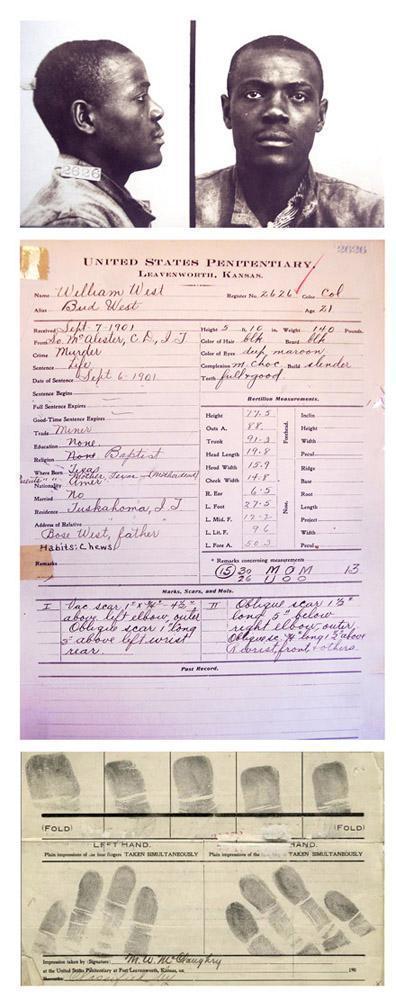
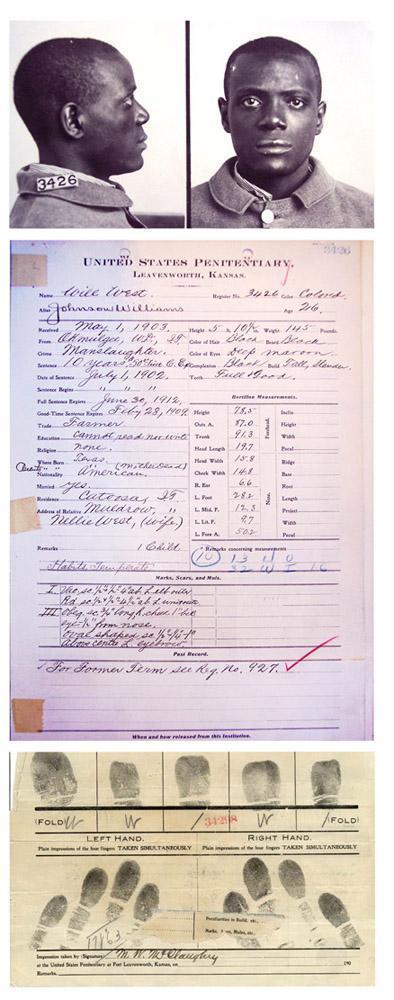
The employ of fingerprints began at the St. Louis Police Department. They were assisted by a Sergeant from Scotland Yard who had been on duty at the St. Louis Earth's Off-white Exposition guarding the British Display. After the St. Louis Earth'south Fair, more and more US police agencies joined in submitting fingerprints to the International Association of Chiefs of Law Bureau of Criminal Identification.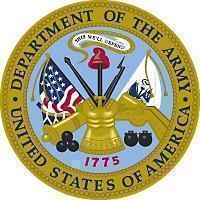
U.S. Army begins using fingerprints.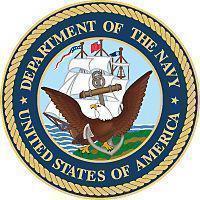
U.South. Navy begins using fingerprints.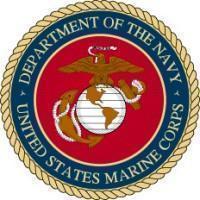
U.South. Marine Corps begins using fingerprints.
In 1910, Frederick Brayley published the first American textbook on fingerprints, "Arrangement of Finger Prints, Identification, and Their Uses."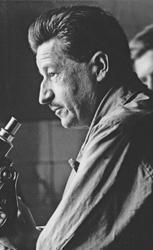
Dr. Edmond Locard published his fingerprint identification conclusions and the criteria that should be used to ensure reliability based on a statistical assay study in 1914. His research revealed the following 3-role rule, which tin be summarized every bit follows:
(1) An international identification file;
(2) A classification system for such files; and
(iii) A list of categories for ordinary-constabulary "international" or "cosmopolitan" offenders.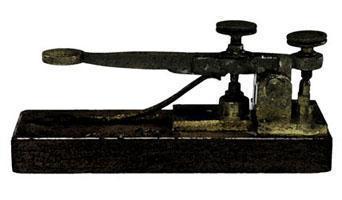
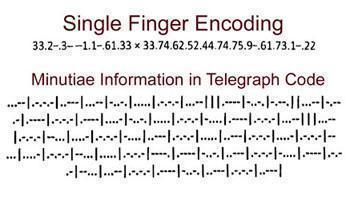
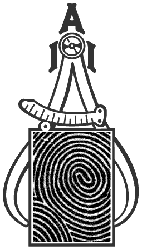
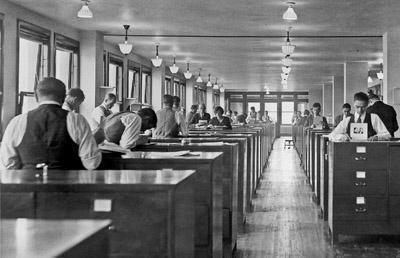
Fingerprint Clerks in the Technical Section of the FBI's Identification Division in 1930. The job championship Fingerprint Clerk was later changed to Fingerprint Examiner.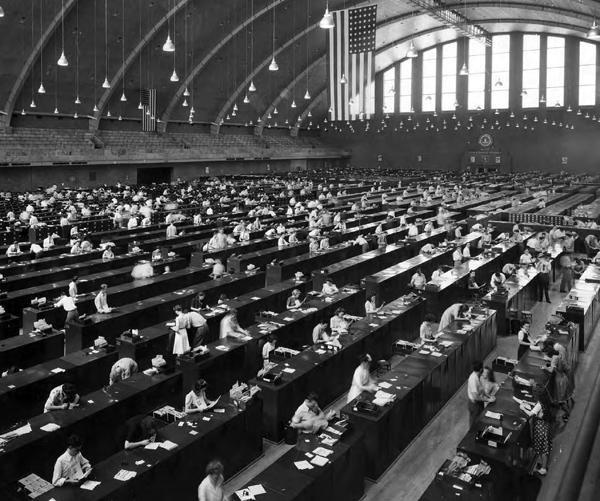
FBI Identification Division experts
in the Washington DC Armory.
On 15 Dec 1971, the FBI began accepting merely arrest fingerprint cards with light red (pink) impression boundary lines conforming to FD-249 specifications. Before that date, many U.s.a. law enforcement agencies used their own 8-inch x eight-inch fingerprint cards with slight variations of the summit and width of blocks wherein fingerprints would be recorded. The change was needed for ii reasons:
● To standardize the location of fingerprints for automated fingerprint scanning (flight spot laser scanning in the early on years); and
● To eliminate artificial bifurcations (artifacts) created when inked fingerprints extended over blackness ink finger block boundary lines. The light crimson ink eliminated such artifact bug. 
Click on the above image to see the front of the new "pinkish" FBI criminal record fingerprint cards used since 1971.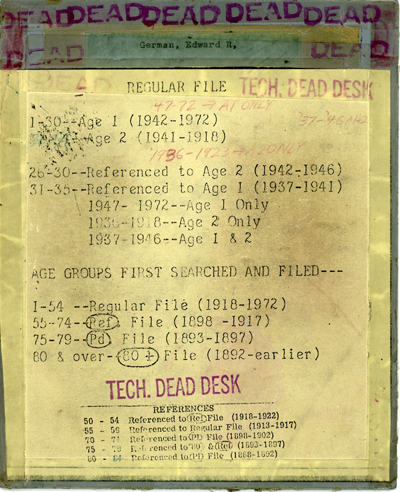
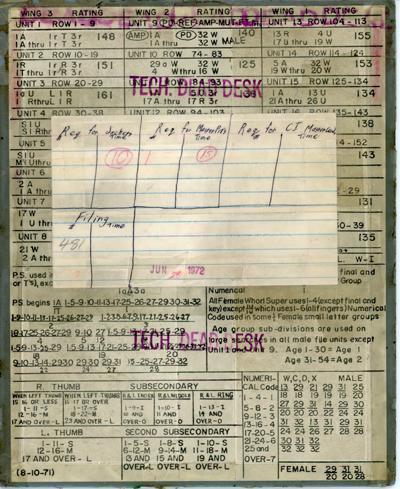
The in a higher place placeholder carte is stamped with the word "DEAD" to point the Fingerprint Examiner worked for the Dead Desk unit of the Technical Section (TECH DEAD Desk-bound). The Expressionless Desk examiners were assigned the difficult task of daily searching unknown deceased fingerprints from unidentified persons (from bodies discovered without ID documents, and fingerprints from unidentified deceased Us soldiers in the Viet Nam state of war).
The International Clan for Identification Standardization Committee authored a resolution stating that each identification is unique and no valid basis exists to require a minimum number of matching points in two friction ridge impressions to constitute a positive identification. The resolution was approved by members at the 1973 almanac IAI conference. 
In 1974, 4 employees of the Hertfordshire (United Kingdom) Fingerprint Bureau contacted fingerprint experts throughout the UK and began organisation of that country'southward first professional person fingerprint organization, the National Club of Fingerprint Officers. The organization initially consisted of only UK experts, but apace expanded to international telescopic and was renamed The Fingerprint Society in 1977. The initials FFS backside a fingerprint expert'southward name indicates they were recognized as a Fellow of the Fingerprint Social club. The Society hosted annual educational conferences with speakers and delegates attending from many countries. In 2017, The Fingerprint Lodge merged with The Chartered Gild of Forensic Sciences (CSFS) and has since been known equally the CSFS Fingerprint Division.
At the International Symposium on Latent Fingerprint Detection and Identification, conducted by the Israeli National Police Bureau, at Neurim, Israel, June, 1995, the Neurim Declaration was issued. The declaration, (authored past Pierre Margot and Ed German language), states "No scientific basis exists for requiring that a pre-adamant minimum number of friction ridge features must be present in two impressions in order to found a positive identification." The announcement was unanimously approved by all present, and later, signed by 28 persons from the following 11 countries: Commonwealth of australia, Canada, France, Kingdom of the netherlands, Republic of hungary, Israel, New Zealand, Sweden, Switzerland, United Kingdom, and U.s.a..
2004
2000s
Because of quality assurance lessons learned later on loftier-profile case errors such as the Brandon Mayfield mistaken identification, check boxes for latent print test since 2004 accept included the post-obit:
- Training to competency of all latent print examiners in compliance with national or international guidelines.
- Annual Proficiency Testing of every latent print examiner in compliance with national or international guidelines.
- International Association for Identification Certified Latent Print Examiner condition. Just equally nearly accountants are not Certified Public Accountants, less than one-half of all latent print examiners in America always attain IAI Certification . It does not mean they are non trained to minimum competency but does mean they have not passed what many United states state and federal labs consider the minimum status for employment as senior latent print examiners.
- Every latent print "identification" (strongest clan) must undergo quality assurance review by a second trained to competency latent print examiner.
- Every example including 1 of the post-obit " scarlet flags " must undergo blind-review past a second latent print examiner (preferably past a CLPE ). During the past four decades, one or both of these reddish flags take near always been nowadays when a mistaken "identification" happens:
- But one latent print strongest association ("identification") to a person, especially if the association resulted from automated search results (AFIS or ABIS).
- Any complex (poor quality) latent or tape print involved in a strongest clan ("identification") stance. The following sufficiency graph (SWGFAST version 2013) does not advise or endorse the use of minutiae counts equally the sole criteria for a conclusion threshold, but the xanthous (B) area is typically complex and the red (C) surface area is typically insufficient for "identification" :
No forensic service provider (FSP) tin can do everything in every case. They must all rest accuracy, timeliness, and thoroughness confronting available resources... and thoroughness is typically what gets sacrificed. The variety of latent print casework quality assurance policies used past some FSPs, include the following:
- Requiring a second skilful blind-review of any case involving just i latent print suitable for comparing, whether or non an emptying or strongest association (identification) occurred. This practice helps eliminate confirmation bias when other experts might await only "identifications" to be presented to them for review.
- Requiring a second latent print examiner review (typically non a blind-review) of every latent print comparing in every case, including all eliminations (non-idents).
2012 2014 2015 2021 - Largest Almanac International Identification Conference 2022 America'southward Largest Databases The Department of Homeland Security's As of July 2018, the FBI's Adjacent Generation Identification (NGI) conducts more than than 300,000 tenprint record daily searches against more than 120 meg computerized fingerprint records (both criminal and civil bidder records). The 300,000 daily fingerprint searches support 18,000 law enforcement agencies and 16,000 non-law enforcement agencies FBI civil fingerprint files in NGI (primarily including federal employees and federal employment applicants) have get searchable past all US law enforcement agencies in contempo years. Many enlisted military machine service member fingerprint cards received after 1990, and most (officer, enlisted and noncombatant) war machine-related fingerprint cards received after xix May 2000, have been computerized and are searchable. Every bit of July 2021, NGI'southward ceremonious fingerprint repository has 60,997,507 searchable fingerprint records and over 64 one thousand thousand criminal fingerprint records. The FBI continues to aggrandize their automated identification activities to include other biometrics such as palm, face up, and iris. Direct face search capabilities in NGI are a reality for some United states law enforcement agencies, and all others tin can submit faces to FBI CJIS' Face Services Unit by opening collaborative investigations through their supporting FBI offices. Every land in the America, as well as many large cities, have their own AFIS databases, each with a subset of fingerprint records which are non stored in any other database. Palmprints are besides stored and searched in many of these databases. Law enforcement fingerprint interface standards are of import to enable sharing records and reciprocal searches to identify criminals. International Sharing Many European nations currently leverage World's Largest Database The With a biometric database many times larger than any other in the world, Aadhaar's ability to leverage automated fingerprint and iris modalities (and potentially automated face recognition) enables rapid and reliable automatic searching and identification impossible to accomplish with fingerprint technology alone, specially when searching children and elderly residents' fingerprints (children are fingerprinted and photographed as immature equally age 5). As of ___________________________________ Other countries' experts (specially from non-English language linguistic communication countries) have completed important fingerprint-related scientific accomplishments before and afterwards the listed events. Please e-mail recommended changes and citations for those modifications to ed "at" onin.com. For case, the 12-point rule for identifying fingerprints utilized in America during the early 1900s was abandoned past the FBI in the 1940s when it was realized 12 poor-quality (low clarity) points were less rare (had lower specificity) for "identification" support than fewer very clear points having relatively rare shapes and unit relationships. Present, friction ridge science is improving by attempting to express subjective opinions with greater accurateness ( ___________________________________ Every bit of 2016, the term positive identification (meaning absolute certainty) has been replaced in reports and testimony by well-nigh agencies/experts with more authentic terminology, including variations of wording such as the following: Professor Cole's 2020 paper recommending use of the word "findings" in forensic reports instead of conclusions, decisions, and other terms is ___________________________________ References: FBI, The CJIS Link; vol. 4, no. 23, page 10, by The states Section of Justice, Federal Agency of Investigation, Criminal Justice Data Services Division, Fall 2000. Jenkins, J. J. (1902). National Bureau of Criminal Identification (No. 429). U.Southward. House of Representatives, Committee on the Judiciary. Moore, Greg; Some of the to a higher place diction is credited to Greg Moore, from his previous fingerprint history folio at www.brawleyonline.com/consult/history.htm (no longer online). Von Minden, David L.; provided input for this page involving typos his students kept cut and pasting into their homework. Interpol, "Full general Position on Fingerprint Evidence," by the Interpol European Skilful Group on Fingerprint Identification (accessed March 2010 at www.interpol.int). Coulier, P.-J. Les vapeurs d'iode employees comme moyen de reconnaitre l'amending des ecritures. In L'Annee scientiJique et industrielle; Figuier, Fifty. Ed.; Hachette, 1863; 8, pp. 157-160 at Henry Pelouze de Wood details are from an article by Harry J. Myer, Ii; Finger Print and Identification Magazine; 30(two), August, 1948. Margot, Pierre and Quinche, Nicolas, "Coulier, Paul-Jean (1824-1890): A Precursor in the History of Fingermark Detection and Their Potential Apply for Identifying Their Source (1863)", Journal of forensic identification, 60 (2), March-April 2010, pp. 129-134, (published by the International Clan for Identification). Herschel information is from a Fingerprint Identification presentation by T. Dickerson Melt at the annual meeting of the Texas Division, International Clan for Identification, at Midland, Texas on nine Baronial 1954 (documented in Identification News, April 1964, pp. v-x). William and Will West images courtesy of Joshua L. Connelly, CLPE, whose research into fingerprint history athenaeum continues to enlighten the friction ridge community. Identification. (1896, May 16). Australian Town and Country Journal (Sydney, NSW : 1870 - 1907), p. 28. Retrieved April 2, 2020, from  INTERPOL'south Automated Fingerprint Identification System repository exceeds 150,000 sets of fingerprints for important international criminal records from 190 member countries. Over 170 countries accept 24 x 7 interface power with INTERPOL proficient fingerprint services.
INTERPOL'south Automated Fingerprint Identification System repository exceeds 150,000 sets of fingerprints for important international criminal records from 190 member countries. Over 170 countries accept 24 x 7 interface power with INTERPOL proficient fingerprint services.
In 2014, SWGFAST was replaced by the
The International Clan for Identification celebrated it'southward 100th Ceremony in California, the same state where the IAI began in 1915.
Sunday, Baronial 1st, 2021 - Saturday, Baronial 7th, 2021
The IAI Annual Educational Conference is the largest organized event in the globe and provides a calendar week of high-quality, cutting-edge educational activity and hands-on training in forensic physical show examination and crime scene processing. 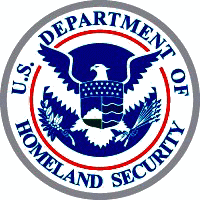

Source: https://onin.com/fp/fphistory.html
0 Response to "what municipal agency was the first to establish a criminal identification bureau?"
Post a Comment